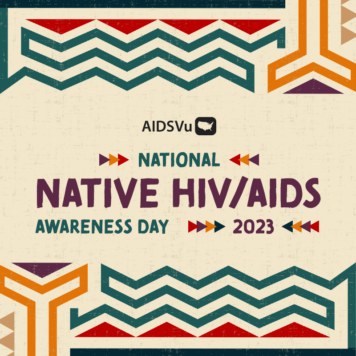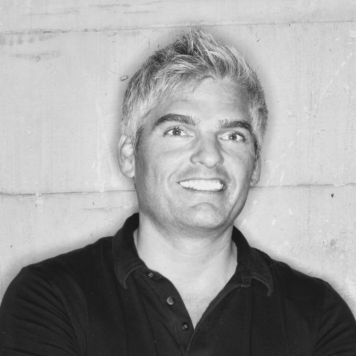Dr. Ramona Beltran, PhD, MSW, is an associate professor at the University of Denver’s Graduate School of Social Work.
Your scholarship has focused on interrupting legacies of historical trauma that affect Indigenous communities. What drew you to this line of work?
My family on my mother’s side is originally from northern Mexico and are of Yaqui descent. They came to Arizona around 1913. When I look back at that starting place, representative patterns such as displacement from original lands, xenophobia, racism, poverty, and structural inequality emerge. I was told stories about these experiences growing up.
I also saw struggles with substance abuse, interpersonal violence, mental health issues, and stigma around mental health across generations. As a child, you don’t understand what that is. You think that it’s something wrong with your family, with your parents, or maybe even your community. When I learned about historical and intergenerational trauma in graduate school, I was able to name something I had seen and lived all my life. As a practitioner, it opened windows of opportunity to intervene.
As a narrative scholar, I think about the concepts of historical and intergenerational trauma as a form of truth telling. When we name something, we make it concrete and can identify solutions. Then, we can also illuminate the strengths in communities and build upon those. Ultimately, I want to build different outcomes for my children and for future generations. In my community, and for those with similar experiences related to colonization, I want to imagine something different, something better. That is what drew me to this work.
Your paper “Keeping Our Hearts from Touching the Ground” explores the historical and contemporary factors of the HIV epidemic among American Indian/Alaska Native (AI/AN) women and the co-occurring epidemics of sexual violence and substance abuse. What can be done to increase HIV/AIDS prevention and treatment in the AI/AN community?
First, we need to start by establishing the historical context. In this paper, we described the ways that Native women’s HIV risk lies at the intersections of gender, race, and historical and ongoing colonialism. We need to understand that intervention is ineffective when the burden of responsibility is placed on individual behaviors, like condom use or relationship negotiation skills. Interventions should be built on understanding a triangle of risk—trauma, substance use, and HIV risk behaviors. This triangle of risk is part of a structural reality that impacts Native women on multiple levels. It impacts our bodies and our behaviors and risks, but also our families, our parenting, our communities, and society.
Second, rather than starting from deficit-based thinking as we seek solutions, we should also look to community strengths. In this paper, we talk about the important and powerful role of women in many Native American communities and holistic approaches. The psychosocial, cultural, and spiritual approaches to intervention that emanate from Native women and communities are really truly essential.
Third, we should seek to collaboratively build culture-centered interventions that are specific to tribal and local communities. We should devote resources and capacity building to people and practices in communities and tribes and support them as they design, implement, and evaluate their own responses and interventions. We need to support creativity and out of the box thinking. When it comes to Native women, they should be the ones leading the process.
Finally, it is important to support and utilize liberatory approaches to research, like community-based participatory research or participatory action research strategies to identify solutions and develop treatment models. This way, community members and stakeholders are not just added to mainstream approaches to research but become centered in all aspects of project and intervention, design, and evaluation.
In 2020, 47% of all new HIV diagnoses among American Indian/Alaska Native women were attributed to injection drug use—the highest percentage compared to women of other races/ethnicities. What advocacy or intervention methods should be implemented to address this disparity?
Harm reduction is a particularly powerful way to address these disparities. For example, rather than requiring people to be clean and sober to secure housing, programs can provide clean needles, safe shelter, and culture centered case management as an alternative. They can also work with communities to destigmatize and humanize substance use. Part of that effort is connected to building historical and contemporary context and understanding that people are in pain from the colonial past, and that it is exacerbated by ongoing structural violence that compounds it in the now.
There are leaders in the field, like the Northwest Portland Area Indian Health Board, that have supported several projects that explore harm reduction. I recently read an article about a project conducted by the White Earth Nation in 2019. In that project, researchers, providers and advocates reviewed opioid overdose cases beyond medical records, and they began with talking about individual strengths. Some of the data they used included social media posts to inform their analysis and to humanize the individual and their families leading up to overdose. They determined that respect, friendship, and non-judgmental support were protective. These complex medical problems often require grace and compassion simultaneous to access to treatment and stigma reduction efforts.
American Indian and Alaska Native people are often misunderstood by healthcare professionals due to cultural barriers. What steps should medical professionals take to provide culturally competent health care to American Indian and Alaska Native people living with HIV/AIDS?
Deep contextual understanding is necessary. Cultural barriers may have to do with stigma, shame, or fear about possible consequences if folks seek treatment. There are also issues like racial misclassification or assumptions made on the provider’s part, which reminds me of a time years ago when I was on a community advisory committee for a Native health project. Several people on that advisory board talked about how they would walk into the doctor’s office and the provider would immediately assume they had diabetes and would treat them with disdain because they would attribute their assumed condition to their choices.
An important issue in addition to cultural barriers is provider bias. We can start by training our medical professionals to have a regular self-reflexive process where they can identify their own biases in relation to communities who’ve historically been minoritized or marginalized. Once they can see and name their own biases, they can do differently. They can let clients unfold on their own terms and in their own time. This will lead to building trust and relationships, which really should be the starting place for treating patients with care and compassion. Ultimately, that provides the path for proper treatment to medical conditions.
Additionally, I’m really inspired by narrative medicine. Narrative medicine is described as a set of skills and practices that allows folks to recognize, absorb, interpret, and be moved to action by the stories of others, particularly by the stories of patients. This runs in stark contrast to mainstream approaches to Western medicine, but there are ideas there that can be adapted and embraced as long as they involve the communities affected.
March 20th is National Native HIV/AIDS Awareness Day, which serves as an opportunity to highlight the health inequalities among Native Americans/Alaska Natives living with HIV in the U.S. What message do you have for the community on this day?
It is still important to get tested and learn our status even as treatment approaches have advanced. That’s part of being responsible individual members within a collective community. We need to continue efforts to destigmatize HIV/AIDS and the risk behaviors associated with it.



